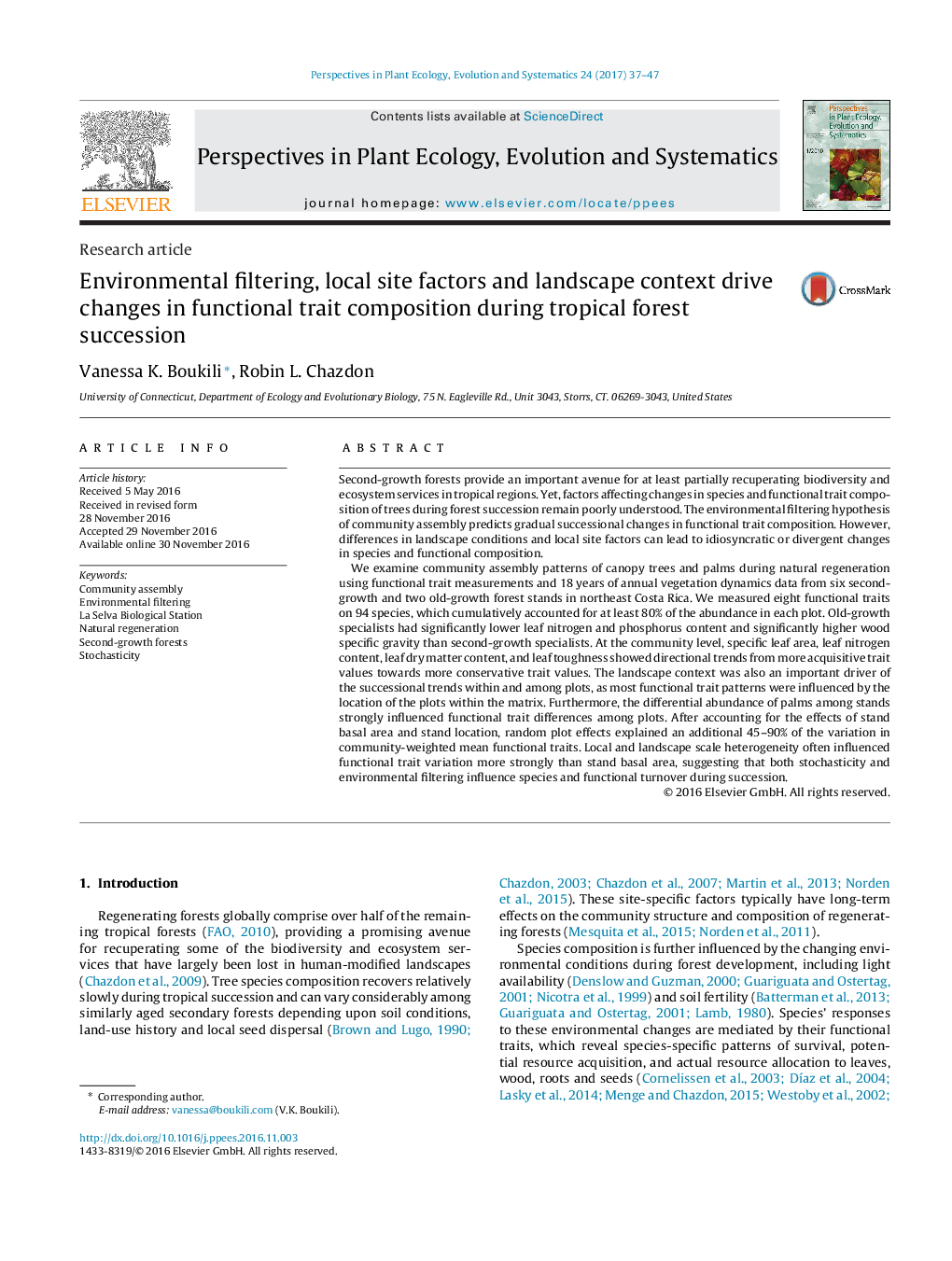| Article ID | Journal | Published Year | Pages | File Type |
|---|---|---|---|---|
| 5744980 | Perspectives in Plant Ecology, Evolution and Systematics | 2017 | 11 Pages |
â¢Five functional traits changed directionally along the successional gradient.â¢Functional trait patterns were also influenced by the location of the plots within the matrix.â¢The abundance of palms strongly influenced community-level functional trait patterns.â¢The strongest driver of functional trends was plot identity.
Second-growth forests provide an important avenue for at least partially recuperating biodiversity and ecosystem services in tropical regions. Yet, factors affecting changes in species and functional trait composition of trees during forest succession remain poorly understood. The environmental filtering hypothesis of community assembly predicts gradual successional changes in functional trait composition. However, differences in landscape conditions and local site factors can lead to idiosyncratic or divergent changes in species and functional composition.We examine community assembly patterns of canopy trees and palms during natural regeneration using functional trait measurements and 18 years of annual vegetation dynamics data from six second-growth and two old-growth forest stands in northeast Costa Rica. We measured eight functional traits on 94 species, which cumulatively accounted for at least 80% of the abundance in each plot. Old-growth specialists had significantly lower leaf nitrogen and phosphorus content and significantly higher wood specific gravity than second-growth specialists. At the community level, specific leaf area, leaf nitrogen content, leaf dry matter content, and leaf toughness showed directional trends from more acquisitive trait values towards more conservative trait values. The landscape context was also an important driver of the successional trends within and among plots, as most functional trait patterns were influenced by the location of the plots within the matrix. Furthermore, the differential abundance of palms among stands strongly influenced functional trait differences among plots. After accounting for the effects of stand basal area and stand location, random plot effects explained an additional 45-90% of the variation in community-weighted mean functional traits. Local and landscape scale heterogeneity often influenced functional trait variation more strongly than stand basal area, suggesting that both stochasticity and environmental filtering influence species and functional turnover during succession.
